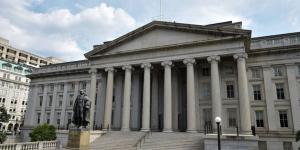Happy Lunar New Year from the USC US-China Institute!
Rates of diabetes are increasing in the U.S. and China, but with very different outcomes for patients.
We visualize how open—or closed—both the U.S. and China are to foreign direct investment in their countries.
We look at how reliant Southeast Asian nations are on trade with China and with the U.S. China is the top trading partner for all, but the U.S. Is a key export market for many.
Politicians expect to be put under a microscope but like to keep their finances in the dark.
As the dance over control of TikTok gets more complicated, last week it came out that the U.S. government has asked American-based video gaming companies where China’s Tencent is an owner or investor to detail how they handle the data of American players.
Apple rolled out new products and services this week, so we look at how important China has been to Apple.
The U.S. Department of Defense has just released information on Chinese military efforts. We've drawn on it and information from other sources to offer this comparison of American and Chinese military resources.
After President Trump withdrew the U.S. from the Trans-Pacific Partnership (TPP), the remaining 11 countries negotiated a new trade deal, the Comprehensive and Progressive Agreement for Trans-Pacific Partnership (CPTPP), which was signed in March 2018. At the same time, China was negotiating its own trade deal, the Regional Comprehensive Economic Partnership (RCEP), whose 15 countries would account for 30% of the world’s population and GDP if it is ratified.
Since then Chinese President Jiang Zemin visited Latin America in 2001, China has become more engaged in the region. Chinese investment and loans to Latin America have declined in the last few years, but the region remains important to China as a market for goods and a source of essential energy and products.
Pages
Featured Articles
We note the passing of many prominent individuals who played some role in U.S.-China affairs, whether in politics, economics or in helping people in one place understand the other.
Events
Ying Zhu looks at new developments for Chinese and global streaming services.
David Zweig examines China's talent recruitment efforts, particularly towards those scientists and engineers who left China for further study. U.S. universities, labs and companies have long brought in talent from China. Are such people still welcome?
















